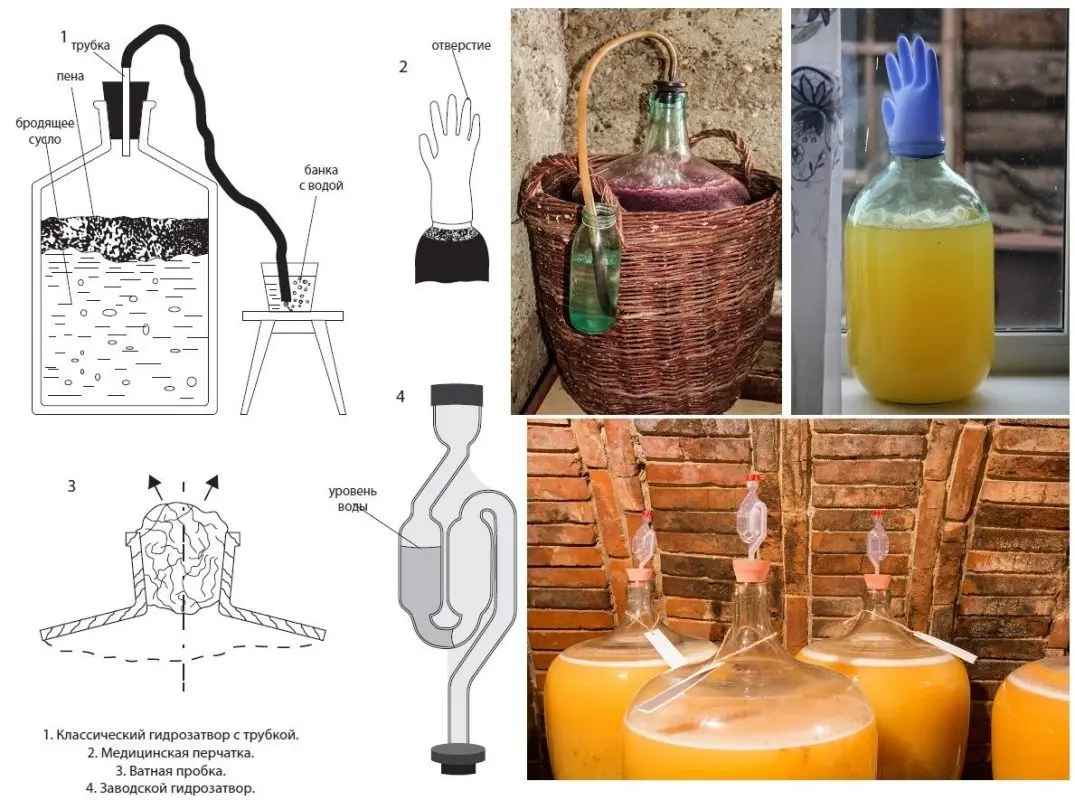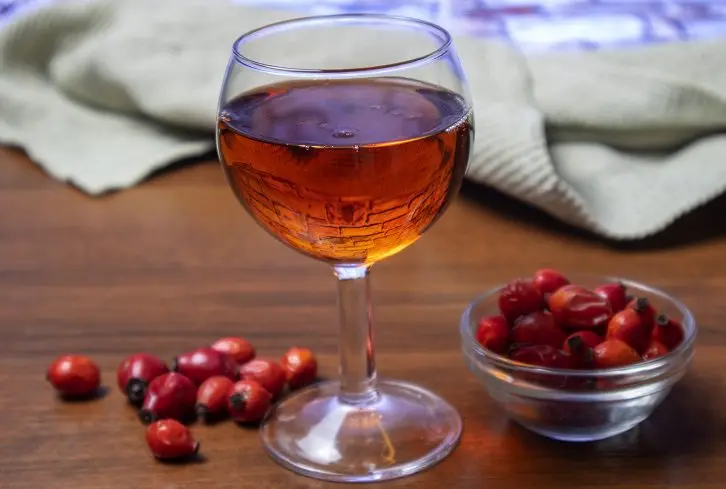Vitamins and other substances contained in rose hips strengthen the immune system, restore metabolism and improve the elasticity of blood vessels. We will look at how to make rosehip wine at home. It will turn out not only tasty, but in moderation a healthy drink.
Only large ripe fruits with a dark red color are suitable for making wine. First, the berries must be carefully sorted out, removing rotten and moldy. Even one spoiled berry can spoil the entire batch of wine. The containers must be perfectly clean and dry, otherwise the wort may be contaminated with pathogenic bacteria and mold.
Suitable fresh, dried and even frozen wild rose of any variety (May, needle, Fedchenko, Daurian, etc.), there is no fundamental difference. In the latter case, the fruits are first thawed and dried, then according to the recipe.
Ingredients:
- rose hips – 3 kg of fresh berries (dried – 2 kg);
- sugar – 3 kg;
- water – 10 liters;
- unwashed raisins (fresh grapes) – 100 grams.
Rosehip wine recipe
1. Crush the fruits with a wooden rolling pin. If using dry berries, cut in half. Bones may not be removed.
2. Mix 2 liters of water and 2 kg of sugar in a saucepan, boil, simmer for 5 minutes, stirring constantly and removing white foam. Cool the finished syrup to a temperature below 30°C.
3. In an enameled (plastic) container with a wide neck, add rose hips, sugar syrup, the rest of the water (8 liters), crushed unwashed grapes or raisins. The last ingredient contains wild yeast needed for fermentation.
4. Stir, bandage the neck with gauze and place the container for 3-4 days in a dark, warm (18-25°C) place. Stir once a day.
5. If signs of fermentation appear (foam, hiss, sour smell), pour the mixture into a fermentation tank (fill a maximum of 2/3 of the volume) and install a water seal (rubber glove with a hole in the finger to remove carbon dioxide). Place the bottle in a dark place at 18-29°C. During the fermentation period, it is very important to maintain a stable temperature.

6. After 7 days, filter the wort through cheesecloth to separate the pulp (solid part). Add the remaining sugar (1 kg) to the fermented juice and reinstall the water seal.
After 4-6 weeks, the water seal will stop gurgling (the glove will deflate), sediment will appear at the bottom, and the wine itself will become noticeably lighter. This means that active fermentation is over and it’s time to move on to the next stage.
If fermentation does not stop 50 days after the start of preparation, so that bitterness does not appear, the wine must be drained from the sediment through a straw and left to ferment under a water seal or a glove under the same conditions.
7. Drain the fermented young wine from the wild rose through a straw into another clean container. It is important not to touch the sediment at the bottom. If desired, add more sugar to taste or fix with vodka (alcohol) in an amount of 2-15% of the volume.
Fill storage containers to the top so that there is no contact with oxygen. Close the lid tightly (or install a water seal), transfer to a dark cool (5-16°C) place for aging.
8. After 2-3 months, pour the wine from the sediment into the prepared bottles, then close it hermetically with stoppers. Store in refrigerator or basement. Subject to the temperature regime of 10-16 ° C, the shelf life is up to 2 years.
The result is 7-8 liters of homemade rosehip wine with a strength of 11-13 degrees. The drink has an amber color, fruit aroma and a slightly tart taste.










